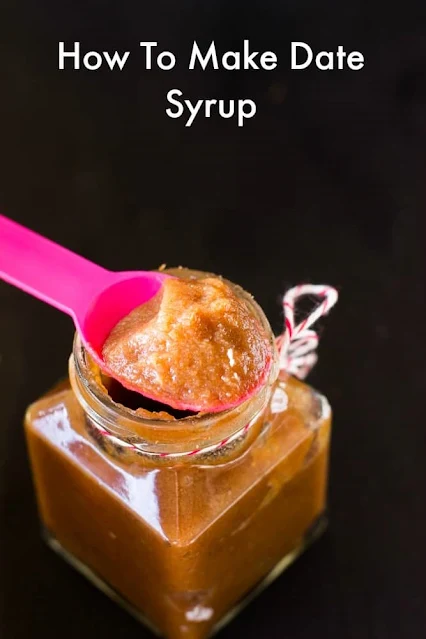Want to cut back on sugar but not on sweets? If so, date syrup might be the solution!
Who doesn't enjoy sweets, after all? In that case, try incorporating some dates into your life and see if anything doesn't start to alter if you're one of the few. simply because some sugar replacements have better flavor. Yes, there are many different syrups in grocery stores, including maple, molasses, and agave, so what makes date syrup unique?
Learn how to have fun using this brand-new but traditional sweetener in your regular cooking activities!
Date Syrup: Why to Try
Date “Honey”
Date syrup can historically be traced back as one of the oldest natural sweeteners we know of, as evidenced from ancient Mesopotamian cuneiform manuscripts. (1) The date, native to the Middle Eastern region, was frequently used as a dried fruit and made into a nectar for a sweetener.
Medjool dates are the variety you’ll want to use for making syrup because they contain the most flesh per seed, and you will get more bang for your buck since they are sweeter and more tender.
Mineral-rich
Date syrup has a glycemic index reading of 46, compared to 68-70 for table sugar, making it a healthier option. And the high soluble fiber content will prevent the spike in blood sugar that often accompanies dysglycemia (poor sugar regulation). (2)
Moreover, just one tablespoon of date syrup contains over twice the potassium, calcium, and magnesium found in either maple syrup or honey – with up to 10x the antioxidant level! These include flavonoids (anti-inflammatories), carotenoids (eye and heart health), and phenolic acids. These minerals have the added bonus of helping to manage serum glucose levels throughout the day. as well as activating neural cells. Yep! Brain health! (3)
As the rich amber color suggests, this syrup is high in iron and folate, so it can help alleviate anemic symptoms and increase blood production, especially for pregnant women. (4)
Natural Colon Tonic
Date syrup has more than just the sugar and the minerals. There is also a high amount of fiber which is a prebiotic, or food for the gut microbiome to keep your intestinal tract happy. The fiber can also function as a mild laxative and allow for increased bowel regularity. (5) Sooo, the more regular you eat dates… the more regular you will become!
Life-Saver
In 2015, Hajer Taleb from Cardiff Metropolitan University in the UK, initiated a laboratory test on the efficacy of date syrup in inhibiting the bacterial growth. He proposed that the phenolic compounds found in dates, as in other fruits, have major antioxidant potential. They were spot on! In around 6 hours, the syrup prevented the growth of several strains of bacteria such as Staphylococcus aureus and E. coli – faster even than Manuka honey. (6)
They proposed using date syrup in the future as a topical disinfectant for wounds. The researchers concluded: “While this work is currently in vitro, it suggests that date syrup could exhibit health benefits through its antibacterial activities, similar, or in some cases, better than honey.” (7)
Date Syrup Recipe
Ingredients:- Medjool Dates – 5-10 lbs
- Filtered Water – 1 Gallon
1). Wash all the dates thoroughly and remove any fibrous tips and pits.
2). Place all the dates in a large basin and add enough filtered water to cover by ½ inch. Leave for several hours or overnight.
3). Add the swollen dates and the liquid in a large, tall pot. (Hint: The liquid can still be saved and stored for later use as a base for smoothies as it contains some sugars, fibers and minerals.)
4). Add sufficient water to cover the dates by 1 inch and boil on high (approx. 45 min), stirring occasionally to prevent sticking.
5). Then turn off heat and let the mixture cool, until safe to touch without burning.
6). Take a large nut milk bag and pour the cooked dates solution through the bag into another large pot.
7). Squeeze out all the remnant of the liquid from the bag until all is separated from the fiber. (The fiber can be saved and stored in the fridge for several days for repurposing in recipes.)
8). Then take all the liquid contents of the new pot and boil on high until bubble formation begins – usually takes 1-1.5 hrs.
9). Once bubbles form, then immediately place on warm heat and stir continually until it condenses further into a syrup-like consistency. (Hint: for more viscous flow then cook less, for more runny liquid then cook longer).
10). After a few minutes, remove from heat and let cool.
11). Once cool, pour the syrup into sanitized, pourable glass jars.
12). Can store in the cabinet for months, or fridge for longer.
